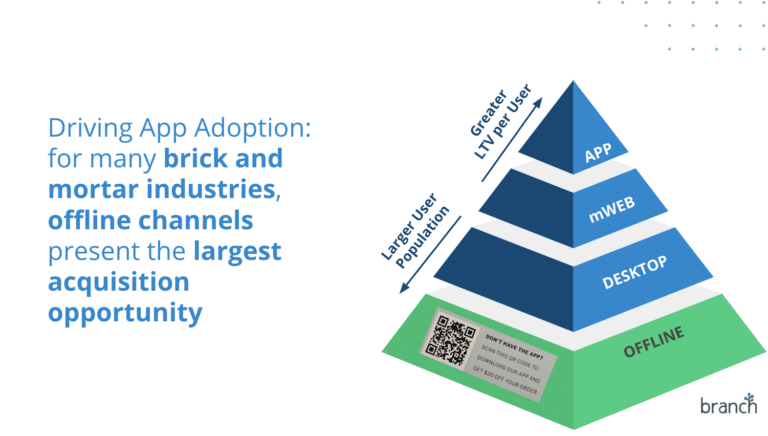As 2021 started many had high hopes that this would be the year of change; many hoped life would return to normal. But with vaccines delayed and new COVID variants emerging, one thing is here to stay: our lives, the way we interact with each other, and technology have all changed profoundly. One change that took us by surprise is the prevalence of an old technology, QR codes, that have exploded in popularity. This Forbes article that came up in my Apple news essential reads is just another sign of how popular and widespread they have become. In my How I Grew This podcast, a customer even mentioned that seeing their grandmother use them without any help really drove the point that no matter how the world changes in 2021, QR codes are here to stay. But what exactly are QR codes? How can you use them to grow your mobile business, and how can you measure their impact on your campaigns? Let’s dive in — you can also use the links below to jump ahead to different sections.
The Growth Opportunity with QR Codes
What are QR codes?
What to look for when using QR Codes to send users to a mobile app
How can you create a QR code linking to a mobile app?
How brands are using QR codes creatively to drive growth
What’s next with QR Codes?
The Growth Opportunity with QR Codes
For many offline businesses, QR codes represent a great opportunity to take their offline larger user population and convert them to highly engaged app users with a much greater LTV. Here are some ways brands should think about using QR codes according to their user base:
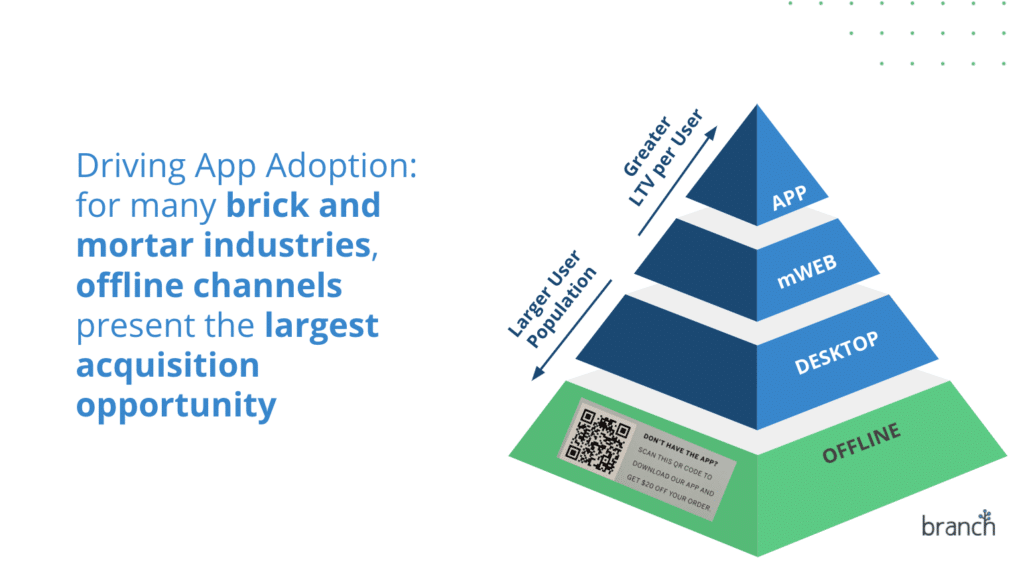
1. Passive/Low Intent Users
Increase brand awareness and target net-new customers who have yet to engage with your brand by using QR codes in direct mail marketing, print advertising, billboards, TV commercials, etc.
2. Active/Medium Intent Users
Entice casual users to download your app with QR codes placed in relevant engagement areas of the business, like in-store signage, catalogues, product packaging, or inserts in delivered packages
3. Engaged/High Intent Users
Drive app adoption among high intent users already engaging with your business by using QR codes as part of onboarding, on billing statements, in store with service personnel, on receipts at checkout, etc.
What are QR codes?
QR codes (abbreviated from Quick Response code) have been around for quite a while and are a type of matrix barcode (or two-dimensional barcode) first designed in 1994 for the automotive industry in Japan. While they received some wider adoption initially, it wasn’t until Apple and Android camera apps were able to scan them directly when they started becoming mainstream — first in Asian markets, and within western markets as a result of COVID accelerating this trend.
What to look for when using QR Codes to send users to a mobile app
Because QR codes are now incredibly simple to scan from a mobile phone, their prevalence has increased significantly over the past year, making them a great way to take users to a mobile app. As you start scaling your offline to online app strategy with QR codes, here are some things to consider:
Ability to measure results
As every marketer knows, if you can’t measure results of a campaign, you can’t calculate ROI, which makes scaling your campaigns increasingly difficult. Using QR codes in your marketing strategy is no different. Whether you use them to promote your app in-store, on your desktop website, on a billboard, in TV commercials, or on printed flyers, the ability to measure results is key. If you use Branch to generate mobile app links and QR codes, every link behind a QR code comes with Branch’s powerful organic attribution that will measure every click after a scan, every install, and every conversion event. That way, you can compare performance of different QR codes, as well as compare them with other organic or paid campaigns.
Ability to update the link behind a QR code at any point
One of the hardest challenges with QR codes is that once they are printed on a piece of collateral, they are very difficult to quickly update at scale when websites change, promotions expire, etc. That’s why when using QR codes, it’s important to use a system like Branch that actually allows you to update the link behind a QR code at any point in time.
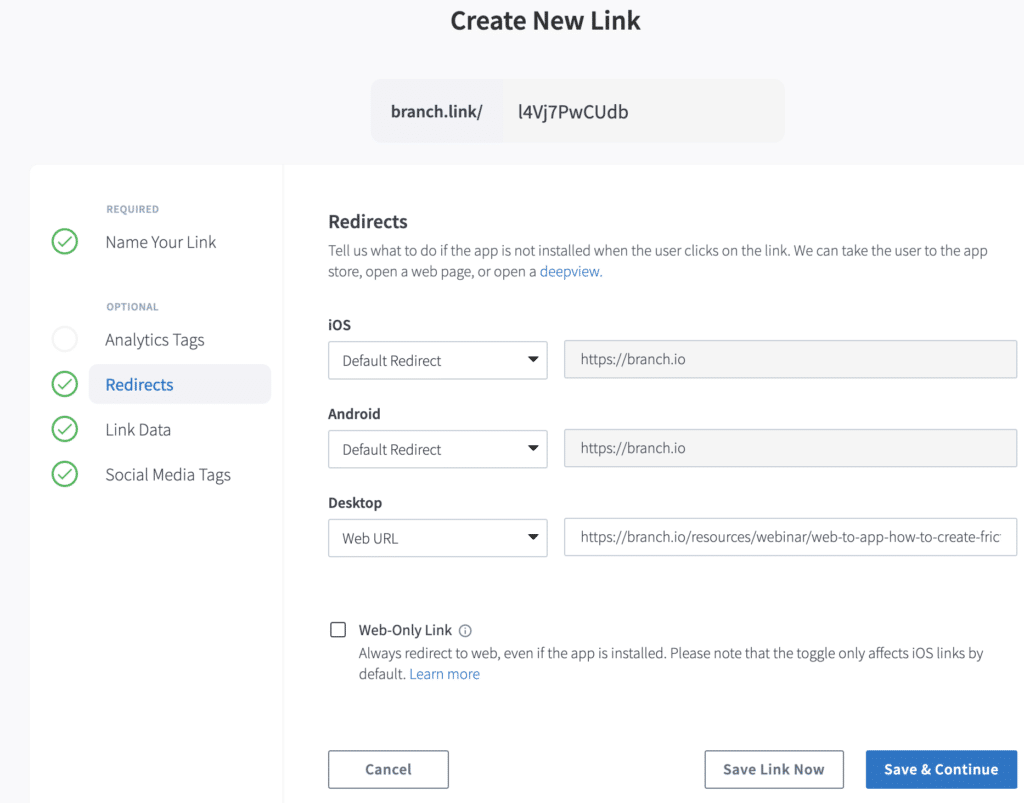
You can edit the redirects for every Branch link behind a QR code at any point
Ability to deep link or personalize the experience
It’s important to understand that a QR code is a wrapper that makes it easy for someone to access a link without having to click or type an address, so the quality of a QR code experience is as good as the quality of the link behind the QR code. As with all mobile linking to apps, it’s important to consider the ability to detect the OS and deep link into an app on both Android and iOS, and to set up a fallback for users to either go to the mobile web or appropriate app store if they do not have the app installed. If you use Branch for your links and QR codes, make sure you set up deferred deep linking if you choose to take them to the app store if they don’t have the app, so that a user gets taken to the relevant in-app content, promotion, or product after install. If you decide to take them to a mobile website instead, you can use our Journeys banners to convert them to the app later and maintain the attribution to the original QR code.
How can you create a QR code that links users to your mobile app?
If your main goal is linking users from QR codes to your mobile app, I suggest using a mobile linking and deep linking tool like Branch. If you use Branch for your mobile linking, all quick links come with a QR code that automatically generates when creating a Branch quick link in the dashboard or in the Link Creator Chrome extension.
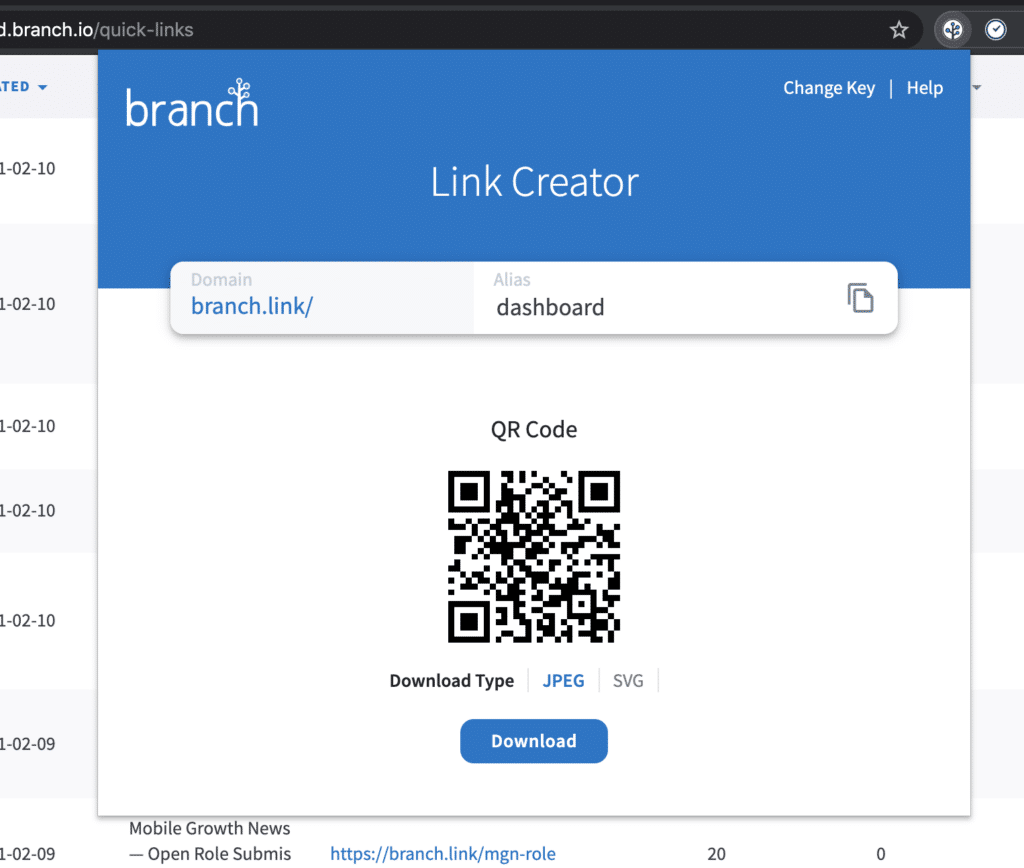
Every Branch quick link has a QR code attached to it

You can get the QR code for an existing Branch link by clicking the three dots next to a quick link and choosing QR code.
How brands are creatively using QR codes to drive growth
Using QR Codes in real-world locations to drive users to the app
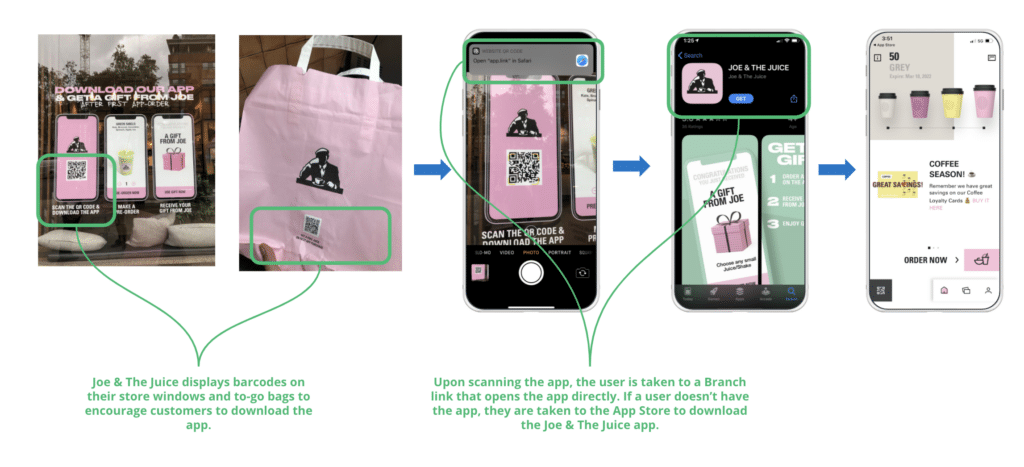
Joe & The Juice promoting the app on store windows and to-go bags
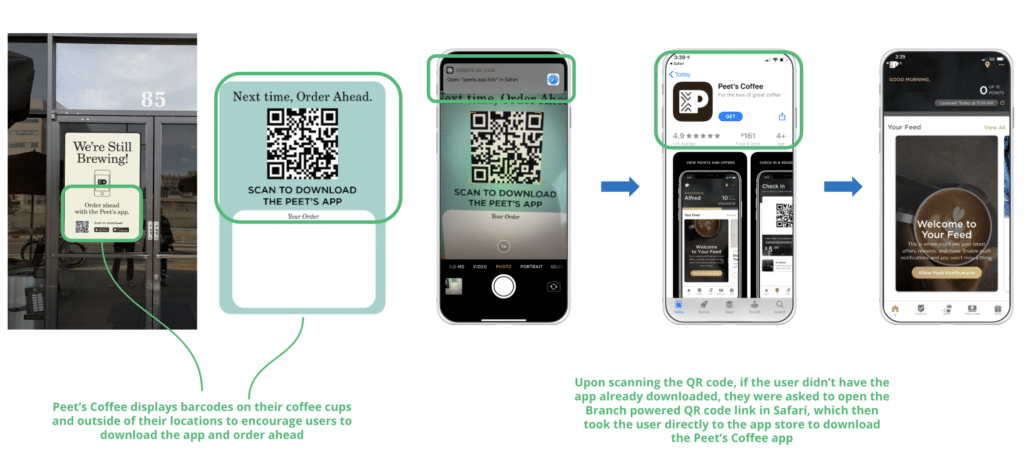
Peet’s Coffee promoting the app on to-go cups and store doors
Generating contests between store locations to drive app downloads
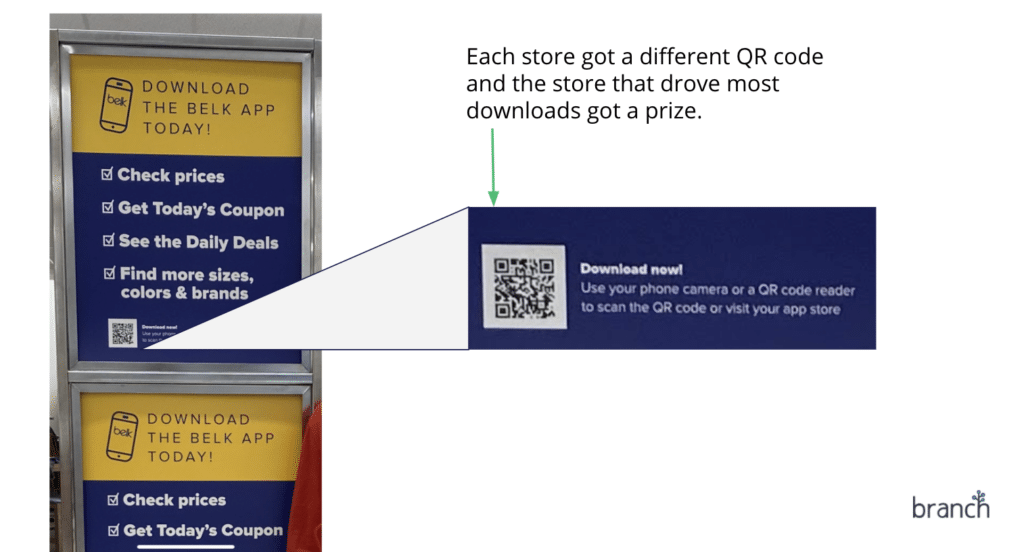
Belk used QR codes in stores to drive app downloads via app-only features such as coupons, the ability for customers to find more sizes and colors, and more. In addition, they created something called App Attack – a campaign to get their employees in stores to drive more app downloads. You can hear their story in the recent episode of our podcast How I Grew This, featuring Belk’s Senior Mobile Delivery Manager Matt Hudson.
Using QR codes to drive users from desktop website to the mobile app
QR codes are quickly becoming brands’ preferred method for bringing users from the desktop website to the mobile app due to their ease of use.
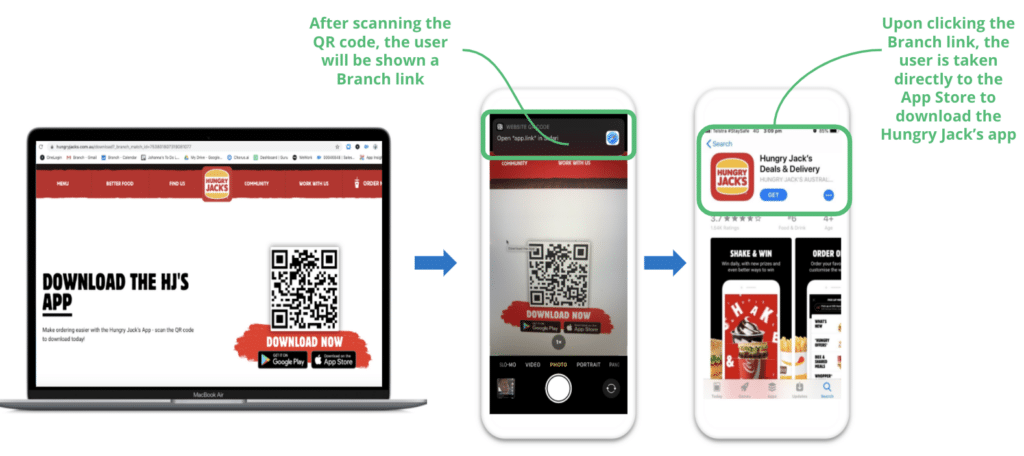
Hungry Jack’s desktop to app flow
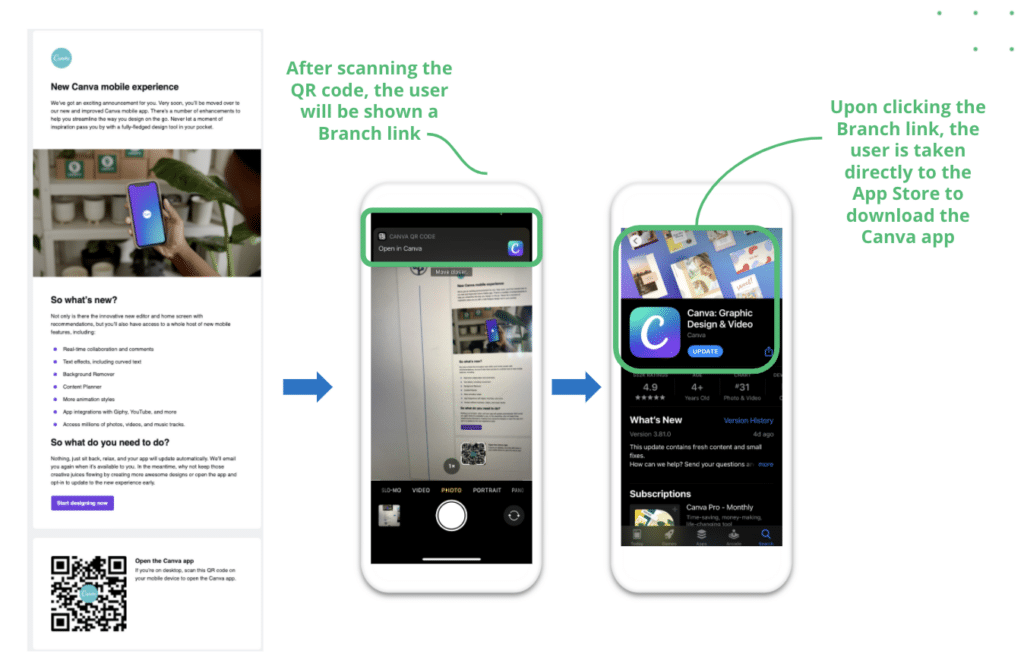
Canva’s desktop to app experience
Using QR codes to drive and track results with direct mail
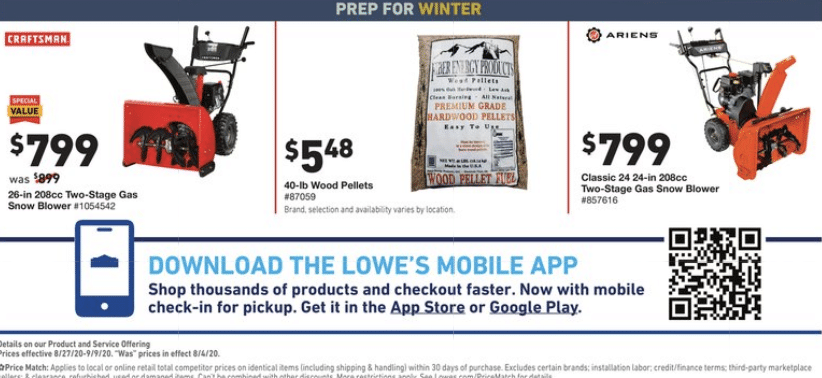
Lowe’s direct mail app promo
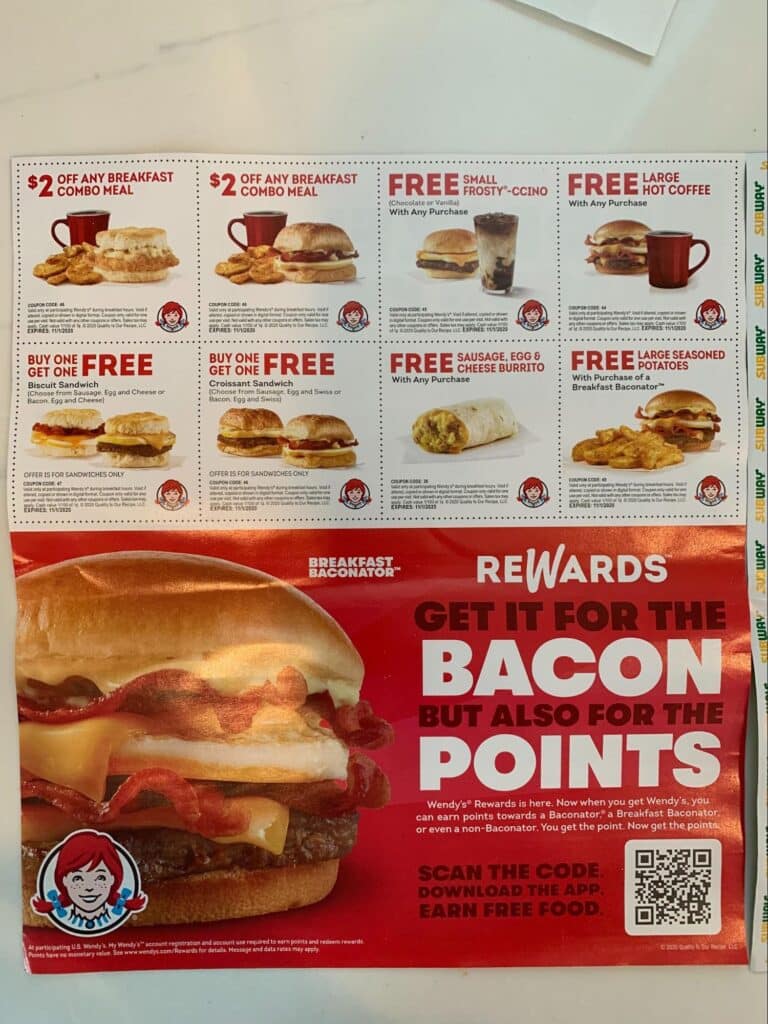
Wendy’s direct mail promo
Using QR codes drive and track results with print media
While publications can give you good estimates when it comes to circulation and views, ad conversions are still hard to track. Using a QR code can help improve the user experience and help you measure the campaign or ad.
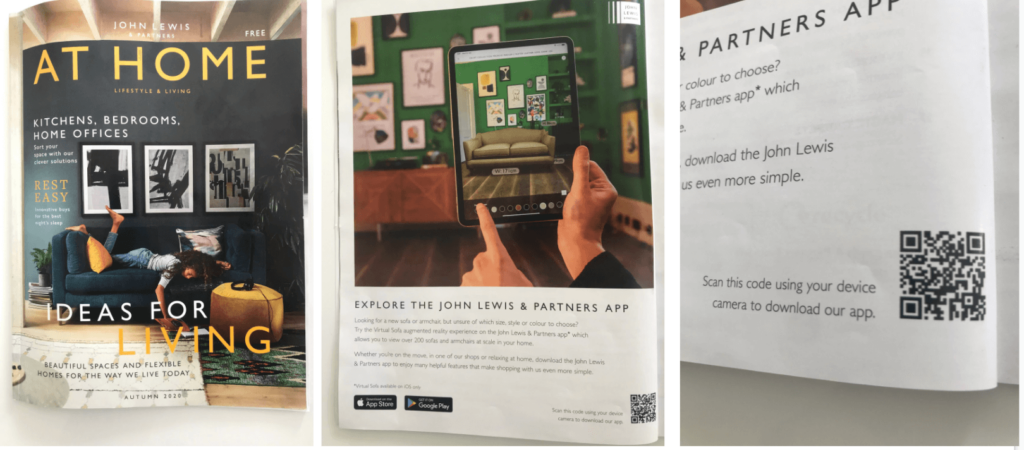
QR code in John Lewis magazine
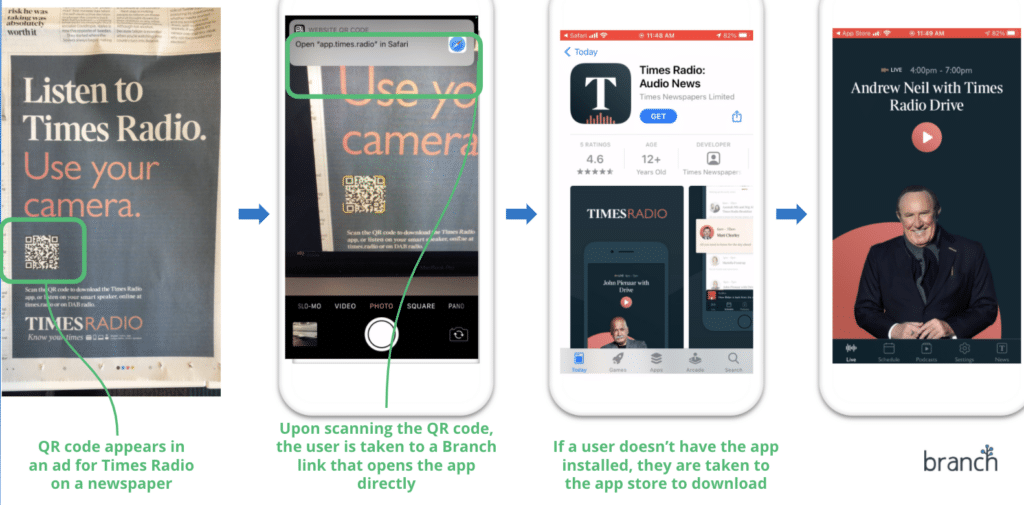
Times newspaper ad
Using QR codes to drive and track results of packing inserts
Placing QR codes on packaging inserts has become a very popular way for brands to track how packaging insert promotions are performing and to drive app adoption from users already engaged with the brand. Below are just a few examples from John Lewis and Wine.com.
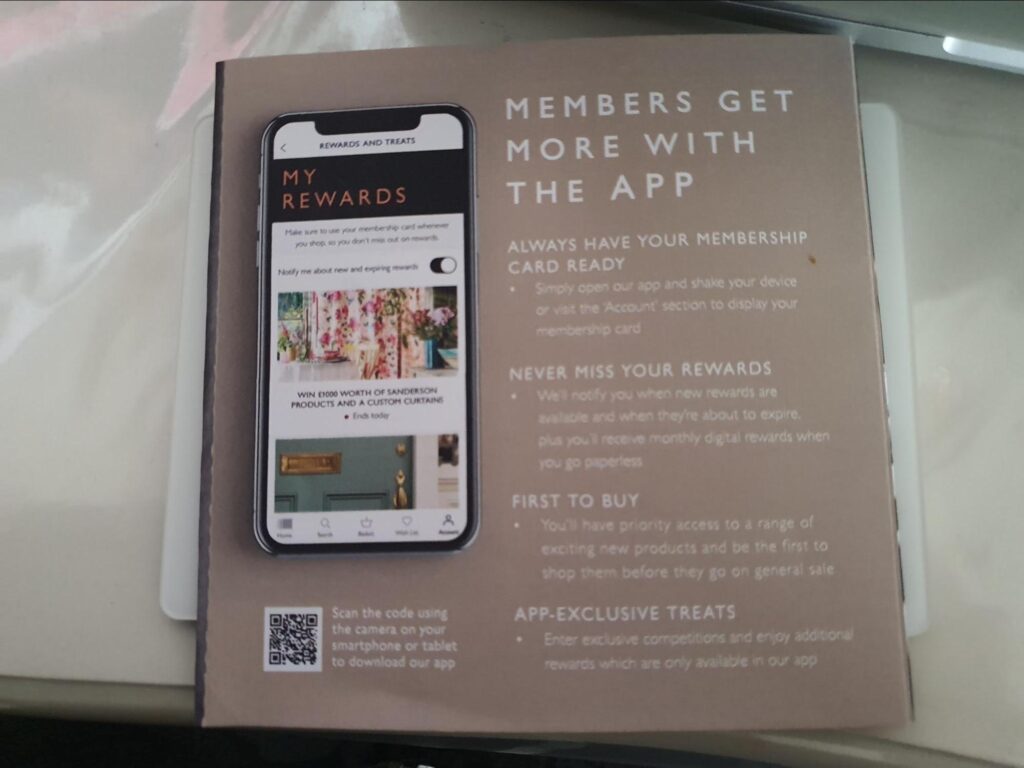
John Lewis packaging insert

Wine.com package insert on a first-time order.</p class=”caption”>
Using QR codes to drive and measure app downloads from TV ads and promotions
With the results of TV promotions being hard to track, QR codes are increasingly being used on TV ads to drive users to the app and measure results. Dunkin Donuts did a promotion during America’s Got Talent sending viewers to a specific sweepstakes co-branded page in the NBC app.
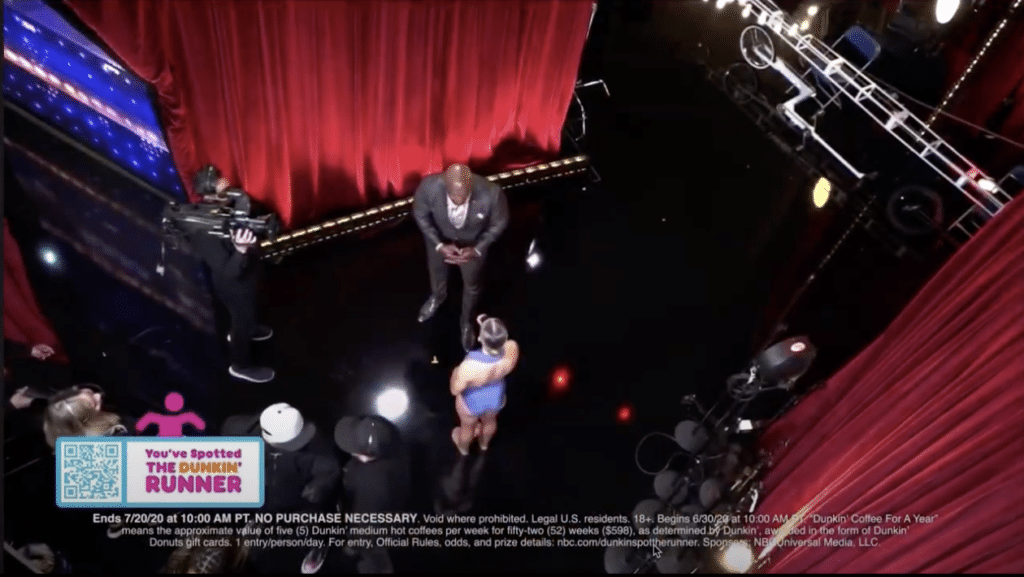
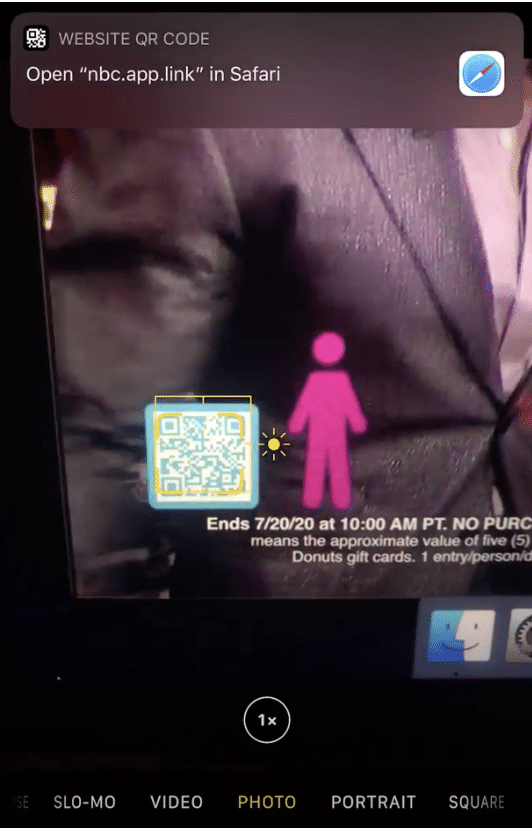
Dunkin and NBC promotion</p class=”caption”>
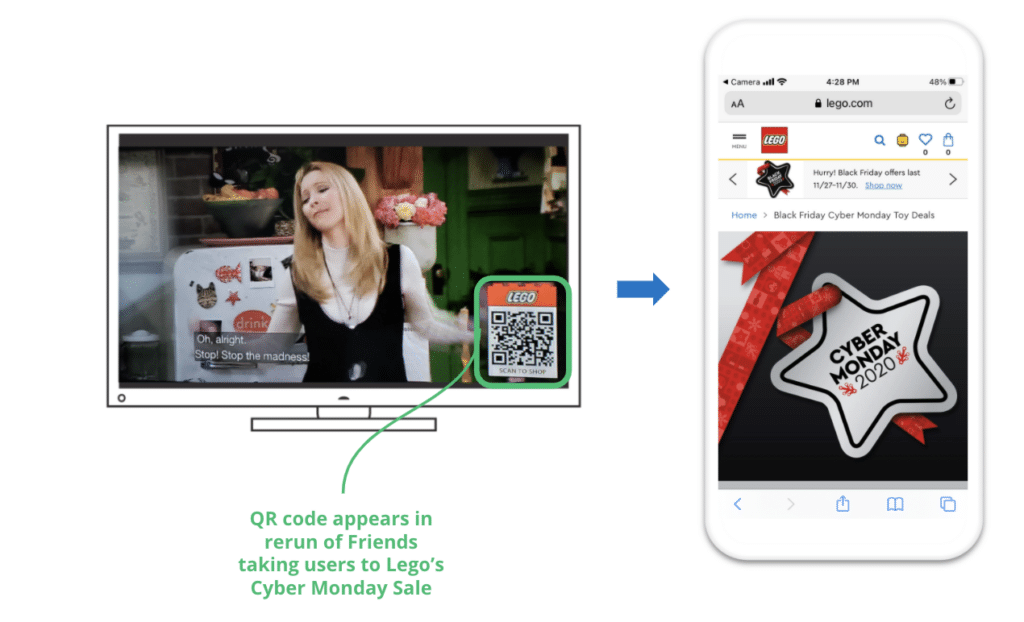
TBS and Lego Partnership</p class=”caption”>
What’s next with QR Codes?
As QR codes continue to grow, we are working on a QR code API that will allow our customers to create dynamic, programmatic branded QR codes at scale for their campaigns. You’ll be able to create unique QR codes for every customer with just a few lines of code, all powered by our Branch links. More information coming soon!

Interested in learning even more about how you can incorporate QR codes to drive app growth? Check out our on-demand webinar with Wine.com and Belk discussing their QR code strategies and how they’ve bridged the offline-to-online gap during COVID. Watch here.






















